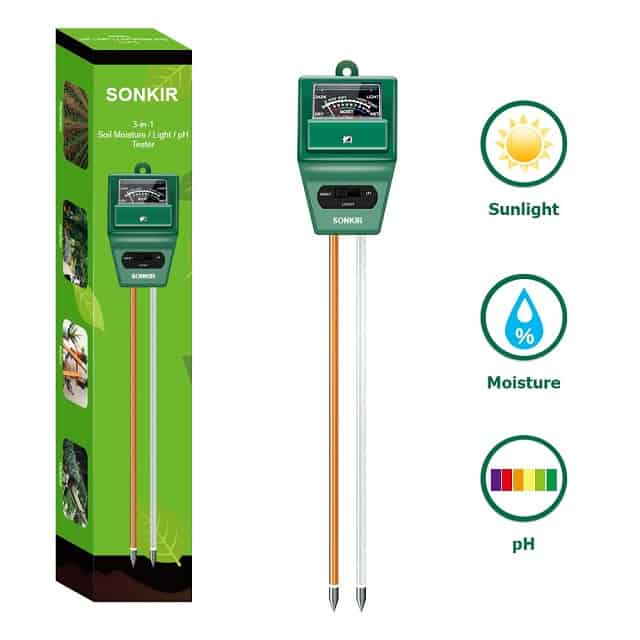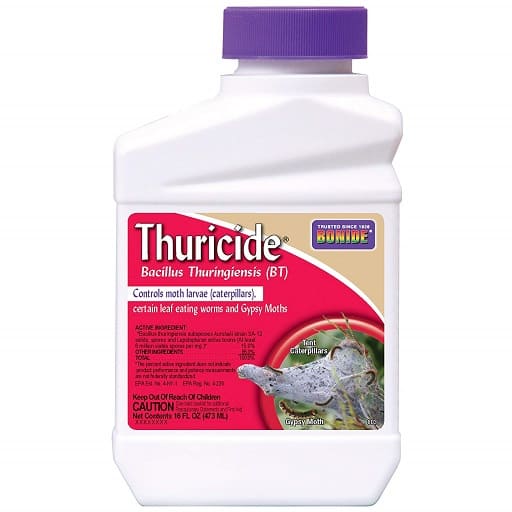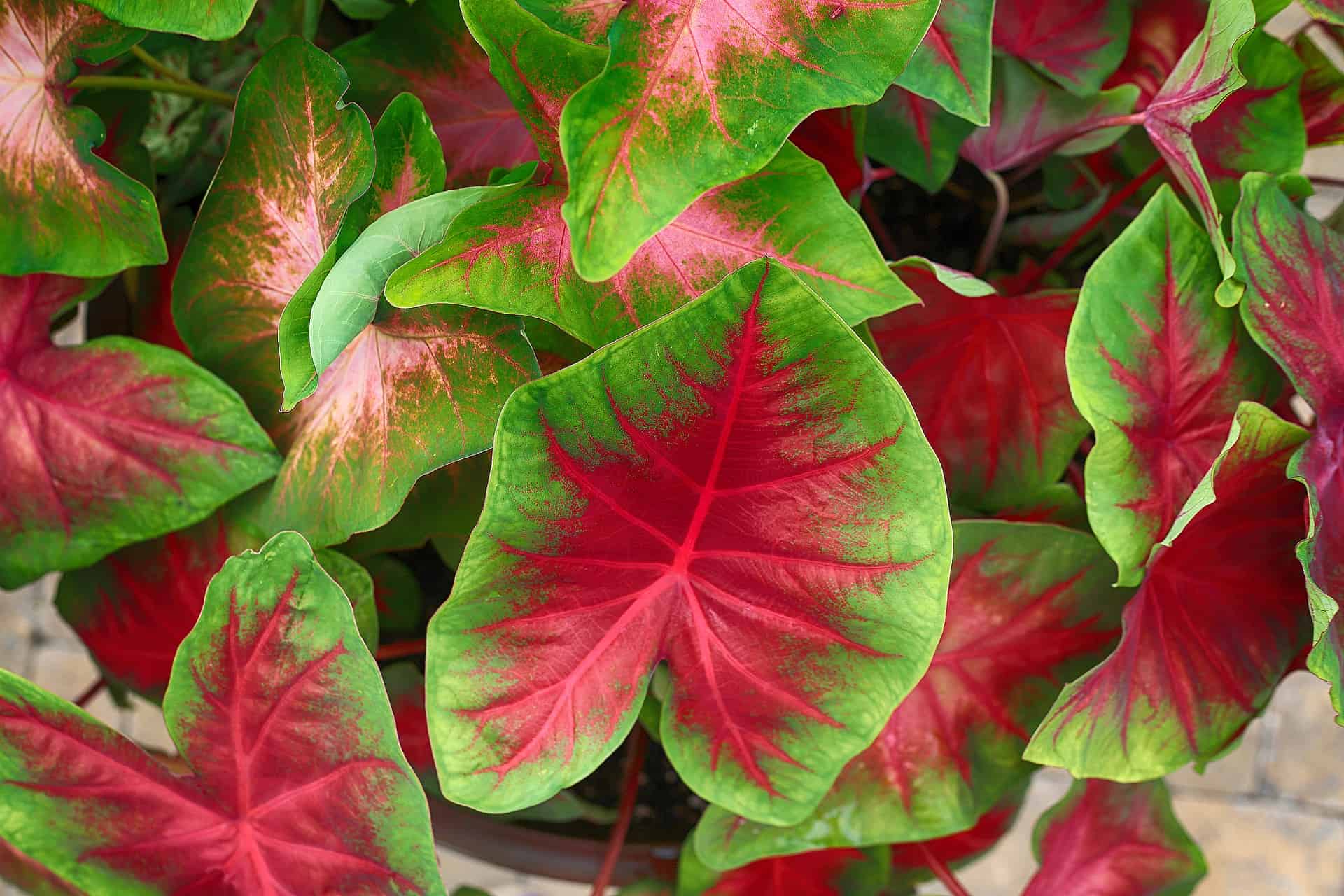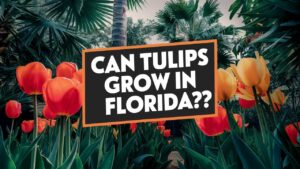Caladium will add a touch of tropical flair to any garden. Their large heart-shaped leaves will put on a wonderful display all summer with shades of red, white, green, yellow, and pink splashed artistically across their surface.
If you’re interested in learning how to grow Caladium keep reading this Caladium growing guide for more information.
Best Caladium Varieties
| Image | Name | Rating | Shop |
|---|---|---|---|
 | Caladium, Bulb, Fancy Mix | ||
 | Caladium Buck (6 Bulbs) | ||
 | Spring Fling Caladium |
Caladium Culture
Sun: Shade, Part Sun
Height: 12 to 18 inches
Spread: 12 to 16 inches
Life Cycle: Annual
Water Requirements: High
Plant Outdoors: May
Caladium Annual or Perennial
Caladium is grown as an annual in most areas, but it is actually a perennial in USDA hardiness zones 9 to 11. In most places, it will start to die back in late fall or early winter. However, you can dig up Caladium tubers and overwinter them indoors, and then you plant them again in the late spring.
Caladium Sun or Shade
Caladium prefers to grow in full shade, but it can also tolerate some direct sunlight in cooler areas for a few hours each day.
Starting Caladium Bulbs Outdoors
The best way to start Caladium is to plant the bulbs after all danger of frost has passed in your area, and the air temperature has reached at least 70°F (21°C). Pick a location that’s in the shade for most of the day. Then cover the bulbs with at least a 1-inch layer of soil, and keep them well watered until the Caladium stems emerge in 1 to 2 weeks.
Caladium Plant Spacing
Caladium bulbs should be planted 8 to 12-inches apart in order to give them plenty of room for their large showy leaves.
Caladium Soil Requirements

Caladium grows best in rich damp slightly acidic soil with a 5.5 to 6 pH. They also will produce larger leaves when grown in soil that has been amended with compost in the early spring.
Caladium Water Requirements
Caladium needs a steady supply of water to maintain its large tender leaves. They also don’t mind growing in slightly waterlogged soil since they can tolerate having “wet feet”.
If you plan on growing Caladium in containers make sure to water them daily to stop them from wilting, and make sure to keep them out of the sun to prevent them from losing too much moisture in the heat.
Caladium Temperature Requirements
Caladiums are tropical plants that thrive in warm climates as long as they are planted in the shade. Caladium tubers also need warm soil conditions to sprout, so you should only plant them once the soil temperatures in your garden consistently reach 55°F to 60°F (13° to 15°C)
Caladium Humidity Requirements
Caladium is native to areas that naturally experience high humidity levels, but it can grow in most climates that range from 50% to 90% Relative Humidity.
Caladium Fertilizer Requirements
Caladium plants are light feeders that should only be fertilized every two weeks. Use a liquid fertilizer with a high nitrogen content, but don’t over-fertilize them since this can burn the plant’s delicate roots and leaves.
How To Grow Caladium in Containers
Caladium can be grown in pots or containers that provide enough space for this large tropical plant to spread out its leaves. They also need to be planted in a rich organic potting soil mix that has good moisture retention properties.
When growing Caladium in containers they will need to be fertilized regularly, or you can plant them in a rich organic potting soil with a time-release fertilizer to keep them well-fed all season.
Caladium Pests

Occasionally Caladium will suffer from spider mite infestations when they are grown indoors. You can treat a spider mite problem with an organic spider mite spray, or you can release spider mite predators to control them naturally
Aphids can also be a problem for Caladium especially late in the growing season. Insecticidal powders can be used to treat plants infested with aphids, or you can spray the plants with a dilute soap solution.
Caladium Diseases
Caladium is susceptible to a number of diseases such as Blight, Leaf Spot, and Tuber Rot.





